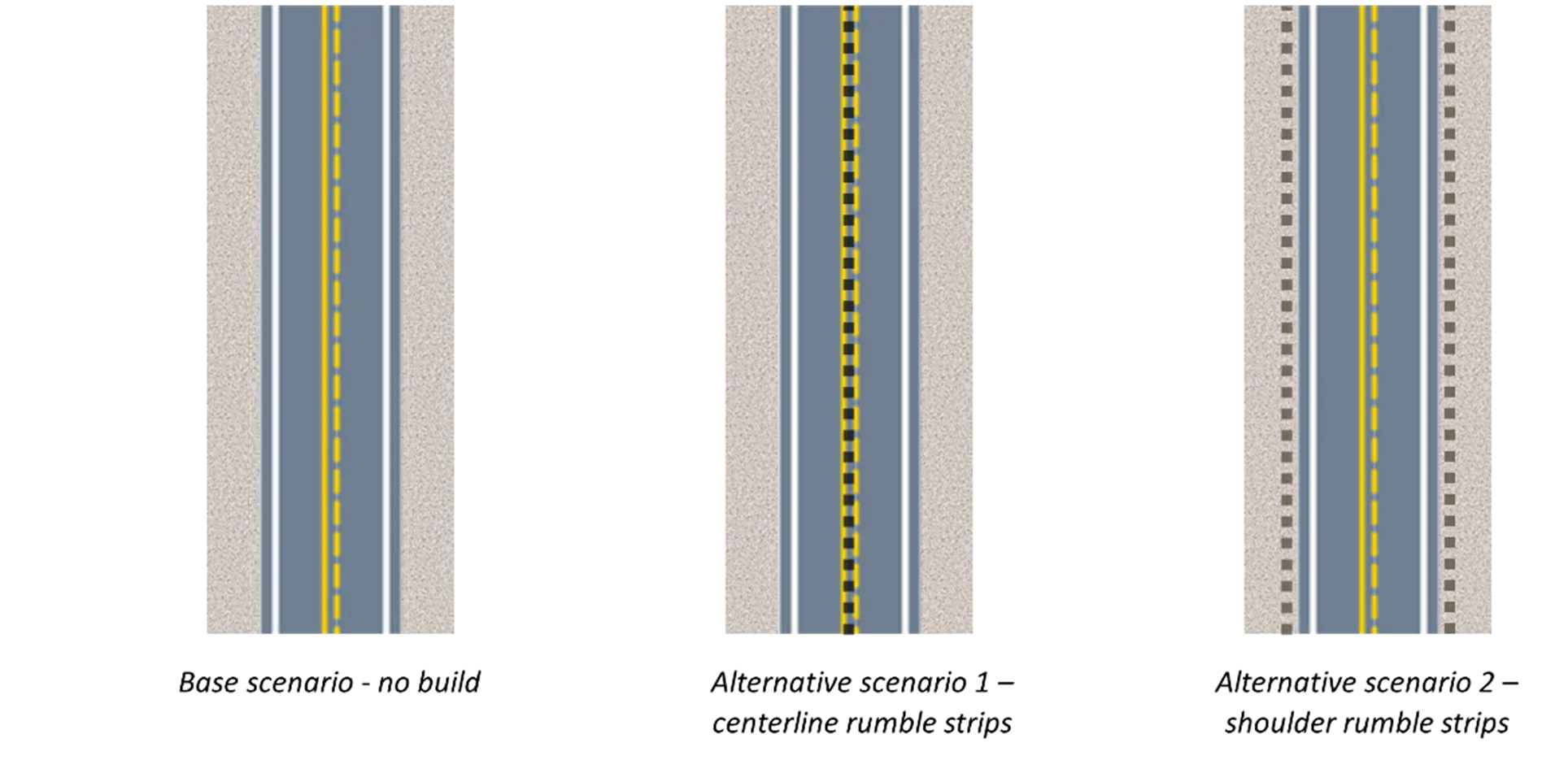CMF Clearinghouse Case Study
Let’s consider a scenario with an existing two-lane highway segment experiencing high crash frequencies. We want to evaluate the effects of installing rumble strips and there are two design options:
(a) Install centerline rumble strips
(b) Install shoulder rumble strips

Install centerline rumble strips
For the first alternative scenario (centerline rumble strips), the analysis process is straightforward as this treatment is, by default, included in the Highway Safety Manual Part C methods. The user checks the “Centerline Rumble Strips” box in HSS, and a CMF of 0.94 (6% reduction in crashes) is applied according to HSM principles:

Install shoulder rumble strips
The second alternative scenario (shoulder rumble strips) is not a treatment included in the HSM Part C methods. Therefore, a CMF from the Clearinghouse will be used (ID #1195):

To apply this CMF using HSS 2025, simply add it to the segment analysis using the new “User-Defined CMFs” input table. For this example, this particular CMF is expected to reduce crashes of all severities by a proportion of 13%:
